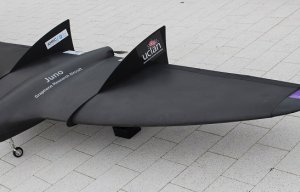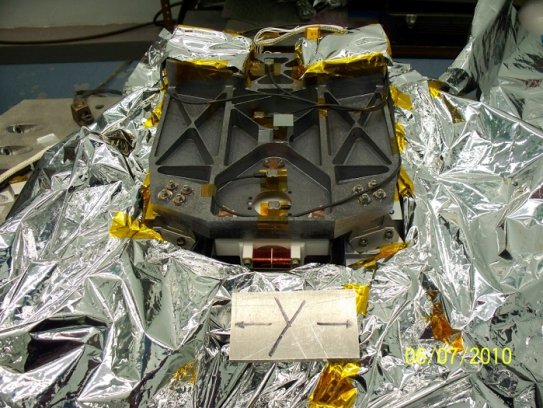
Haydale prepreg for graphene-skinned plane
The extremely stiff sensor carrier for the magnetometer was made from the SGL Group's optimized SIGRASIC material.

21st July 2016
Innovation in Textiles
|
Wiesbaden
At the beginning of July and after a five-year journey in space, the NASA’s Juno spacecraft entered orbit about Jupiter, the largest planet in the solar system. On board the Juno spacecraft is a critical ceramic component based on carbon fibre-reinforced silicon carbide (C/SiC) made by SGL Group.
The instrument carrier for the magnetometer (Magnetometer Optical Bench) has been made from the SGL Group's carbon fibre-reinforced silicon carbide material, designed to meet the most demanding requirements.
Jupiter’s environment is characterized by very intense radiation, which makes very high demands on spacecraft systems and materials. The Juno spacecraft is equipped with highly accurate measuring devices.
The extremely stiff sensor carrier for the magnetometer (Magnetometer Optical Bench) has been made from the SGL Group's optimized SIGRASIC material. According to SGL Group, it combines the non-magnetic properties needed for researching the magnetic field with the extremely demanding requirements of aerospace engineering: high thermal resistance, low density, high stiffness and strength, as well as excellent temperature, radiation and thermal-shock resistance.
Moreover, low thermal expansion paired with high thermal conductivity is especially beneficial for ensuring the high mechanical stability required of this component under the extreme environmental conditions at Jupiter, the manufacturer reports.
SGL Group is a leader in the development of the material class carbon fibre-reinforced silicon carbide (C/SiC). A well known application is the carbon-ceramic brake disc, which was fitted as standard in Porsche GT2 since 2002. Today this carbon-ceramic brake disc is used in many high-performance sports cars.
Through targeted development and high performance of the C/SiC material class, a lot of other applications for this material have materialized to date, according to the manufacturer. These include C/SiC clutch discs in race cars, components for wear resistant industrial applications, such as pump parts, bearing parts and charging racks, and components with complex shapes for ballistic protection (armour) and other friction applications in industry.
According to the company, the potential of the high-tech material C/SiC will be continuously developed at SGL Group’s central research and development facilities, in order to provide customized solutions for specific customer needs.
SGL Group is a leading manufacturer of carbon based products and materials with a comprehensive portfolio ranging from carbon and graphite products to carbon fibres and composites. SGL Group’s core competencies are its expertise in high”temperature technology as well as its applications and engineering know”how gained over many years.
Products from SGL Group are used predominantly in the steel, aluminium, automotive and chemical industries as well as in the semiconductor, solar and LED sectors and in lithium”ion batteries. Carbon based materials and products are also being used increasingly in the wind power, aerospace and defence industries.
With 40 production sites in Europe, North America and Asia as well as a service network covering more than 100 countries, SGL Group is a company with an international presence.

Business intelligence for the fibre, textiles and apparel industries: technologies, innovations, markets, investments, trade policy, sourcing, strategy...
Find out more